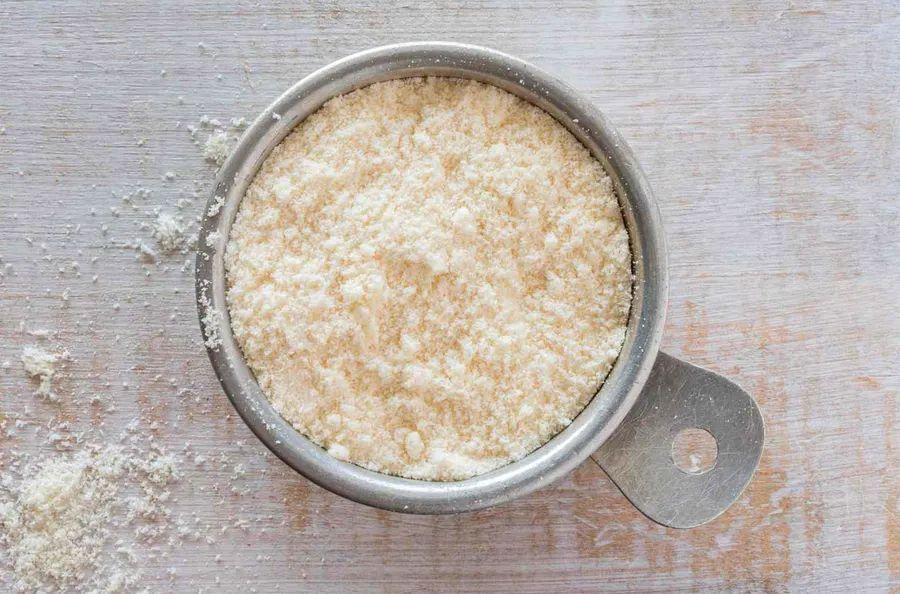What is Coconut Flour and How Can You Use It?

Is there a more versatile plant than the coconut? From drinking its water to eating its 'flesh', using its oil for cooking or beauty products, and even turning its husk into fiber and charcoal, the coconut has endless uses. And yes, you can also turn it into flour. Popular among gluten-free and paleo bakers, it's a great alternative. Despite its name, the coconut is not a true nut, so it's safe for those with nut allergies. Before you start baking with coconut flour, there are a few things to know about how to use it properly.
What Exactly is Coconut Flour?

Coconut flour is a gluten-free substitute for all-purpose flour, created by grinding dried coconut meat into a fine powder. It's typically made from the leftover coconut flesh after coconut milk is extracted.
This soft, fine, white powder has a distinct coconut flavor and aroma, which makes it perfect for certain recipes.
While coconut flour can be used in various baked goods, it’s almost always necessary to combine it with another type of flour. Most recipes can’t be made with coconut flour alone. The reason? Unlike wheat-based flours, coconut flour is not grain-derived, meaning it doesn’t behave the same way when mixed with water. Coming from the fiber-rich part of the coconut, it absorbs much more liquid than other starchy flours like wheat, sorghum, or rice flour.
Coconut Flour Substitutes

If you're planning to swap coconut flour for regular all-purpose wheat flour, you'll need to experiment a bit with your recipe to get the right balance.
- The rule of thumb is to substitute only 20 percent of coconut for wheat flour.
- Flour made from coconut becomes dense and soaks up a lot of moisture when it bakes. To compensate for the moisture imbalance, try adding 2 tablespoons extra liquid for every 2 tablespoons coconut flour you substitute for regular flour.
- Coconut flour can tend to clump up, so be sure to fluff it with a fork before measuring and mixing.
If coconut flour isn’t available at your local store, there are other gluten-free alternatives like almond flour, cassava flour, and sorghum flour that can be used instead.
What is the Flavor of Coconut Flour?
A: Coconut flour has a subtle coconut flavor and aroma, but it’s mild enough to blend well with other ingredients without dominating the taste.
Coconut Flour Nutrition Facts
Coconut flour is rich in fiber, low in calories, and packed with heart-healthy fats.
In just one ounce (about ¼ cup) of coconut flour, you’ll find the following:
- Calories: 124
- Fat: 4 grams
- Protein: 5 grams
- Cholesterol: 0 milligrams
- Carbohydrates: 17 grams
- Fiber: 11 grams
- Sugar: 2 grams
How to Choose Coconut Flour
Check the label to ensure the package contains only coconut as the ingredient—no added sugars, flavorings, or fillers. If you're concerned about gluten, look for a label that confirms the flour was processed in a gluten-free facility.
How to Use Coconut Flour in Cooking
Begin with baking recipes that are designed specifically for coconut flour. Once you're comfortable with how it works, feel free to get creative and experiment. Coconut flour isn’t just for baking; it’s also great for thickening soups or coating foods for frying.
Coconut Flour Baking Inspiration

Now that you're an expert in using coconut flour, it’s time to start baking! Lucky for you, we've compiled a list of our favorite ways to bake with coconut flour. You can also explore our full collection of coconut flour recipes, including everything from pancakes and muffins to breads, cookies, and cakes.
Updated byCorey Williams

1

2

3

4

5
Evaluation :
5/5